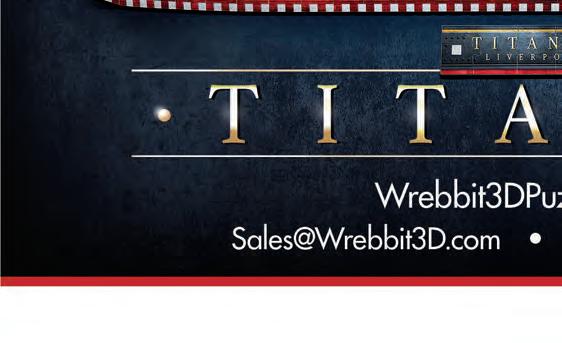
5 minute read
The Never-ending Story
The The Never-ending Never-ending $tory $tory
by Tina Manzer
The bid to raise the federal minimum wage this year failed, but that doesn’t mean we won’t debate it again. And again.
The minimum-wage controversy is now nearly a century old. Ever since the first law was passed during the Great Depression, industries including retail have pushed back on increases as scores of minimum-wage laws were passed at federal, state, and city levels. Along the way, decades’ worth of statistics were generated. You would think that, by now, we could accurately predict the ways an increase affects job loss, productivity, pricing, business closures, and the poverty level, but I think it depends on what economist you talk to.
The discussion always reveals a wide range of perspectives. Some two-thirds of Americans would support the proposed increase, according to an oftquoted Pew Research survey from 2019. And some businesses do support some kind of increase, although not necessarily the jump from $7.25 to the proposed $15. And really – there’s nothing magic about the $15 figure, other than it more than doubles the current rate.
“But beyond sheer numerical and symbolic weight, researchers have found a $15 minimum could have broad social impact,” writes Ben Uglesbee, senior reporter at Retail Dive. The nonpartisan Congressional Budget Office (CBO), for instance, estimates that a $15 minimum would lift nearly 1 million people out of poverty.”
That’s the same CBO that also predicts the increase would cut about 1.4 million jobs.
But economists and alumni of UC Berkeley, an institution that has emerged as a center of minimumwage research over the past 20 years, describe a range of benefits that a higher minimum wage would bring, including a more robust economy and increased economic development in low-wage areas. Employers would benefit, too, with increased labor from workers, cost savings from reduced turnover, productivity gains, and even an increased demand for goods and services from low-wage workers who have received the raise.
Big retailers including Target, Costco and Amazon have already moved to raise their starting wages to $15, according to Retail Dive. Target’s increase occurred last year, and this year, COO John Mulligan told analysts that the larger wage, along with more hours, has led to a drop in turnover and increased customer satisfaction.
Also this year, Costco raised its minimum hourly rate to $16. Its employees are already among the best paid in the front line of retail, and their higher wages bring a number of benefits to the business. “We know that paying employees good wages and providing affordable benefits constitutes a significant competitive advantage for us,” CEO Craig Jelinek told Retail Dive. Specifically, he pointed to minimal turnover coupled with high levels of productivity, commitment and loyalty among employees.
Big retailers can offset the cost of higher wages with increased efficiencies to scale. Mom and pop toy stores cannot.
Not necessarily a consensus
The National Federation of Independent Business (NFIB) opposed the most recent efforts to raise the wage. “One-size-fits-all mandates are always bad for
small businesses, and a nationwide $15-per-hour minimum wage is no exception,” it said in a statement. In March, NFIB released the results of a survey it conducted among its 21,000 Ohio members, where the current minimum wage is $8.80 for non-tipped employees. (That’s about the middle of the pack when you compare it to the minimum wages of the rest of the states). Among its findings were these. • A $15 minimum wage would force 75 percent of small businesses to eliminate jobs (either full-time or part-time), with the greatest impact on part-time employment;
• 65 percent of Ohio small businesses are currently paying some of their employees between the current minimum wage and $15;
• 58 percent would hire fewer employees or put into place a hiring freeze; • A $15 minimum wage would cause these immediate business impacts in rank order: 1) increase prices (23 percent) 2) eliminate or reduce the hiring of entry-level or teenage labor (17 percent) 3) decrease the work hours of current hourly employees (14 percent) 4) eliminate or slow business expansion plans (13 percent)
In South Carolina, Lynn Sikora, owner of a market that sells convenience items and deli/ grocery products, told NPR that the $15 minimum is unrealistic – “‘A’, for the cost of living around here, and ‘B,’ for what the owners could support.”
Lynn employs three full-time workers and normally, two part-time workers who she let go during the pandemic, said the March 2021 article. Her employees get about $10 per hour to start. “If the government

dictated a $15 minimum across the entire country, I would have to fire another person and work 12-hour days; close to 90-hour weeks.”
She would prefer that each state decide the wage for itself, but South Carolina has never set its own wage, instead defaulting to the federal one.
In Cheyenne, Wyoming, Steve Sears, owner of a printing and embroidery shop, told NPR he supports a $15 minimum wage to lift up more American workers. He has three employees who started at $11 an hour, and wishes he had the money to hire two more. “If I could pay $15 an hour right off the bat, I would, and if I have to, I will,” Steve says. To do so, however, he would have to reduce his margins and raise his prices.
Ashraf Hijaz, owner of a chain of beauty supply and furniture stores around the south, has 150 employees whom he started at $9 an hour. He would support the $15 minimum because it would affect most of his shoppers. “They will spend more money,” he told NPR, “and they will give me the ability to increase pay for my employees.”
The patchwork of state and local minimum-wage increases that have occurred over the last several years has frustrated some employers. Businesses that operate multiple locations now have different pay standards for people doing the same job but in different places. That frustration, coupled with the recognition that the minimum wage has not kept up with the rate of inflation, may be changing how some business owners look at the issue, says trends expert Rick Grimaldi, author of FLEX: A Leader’s Guide to Staying Nimble and Mastering Transformative Change in the American Workplace.
“At the same time, some interesting trends are impacting the issue,” he says. “One is the rise of artificial intelligence. Workplaces of the future will most likely consist of a combination of people and robotics. In fact, it’s already happening. The arrival of artificial intelligence is pushing skilled workers downward in the job market – (continued on page 23)




WIZARDING WORLD characters, names and related indicia are © & TM Warner Bros. WBEI. Publishing Rights © JKR. (s21) Entertainment Inc. WB SHIELD: © & TM








